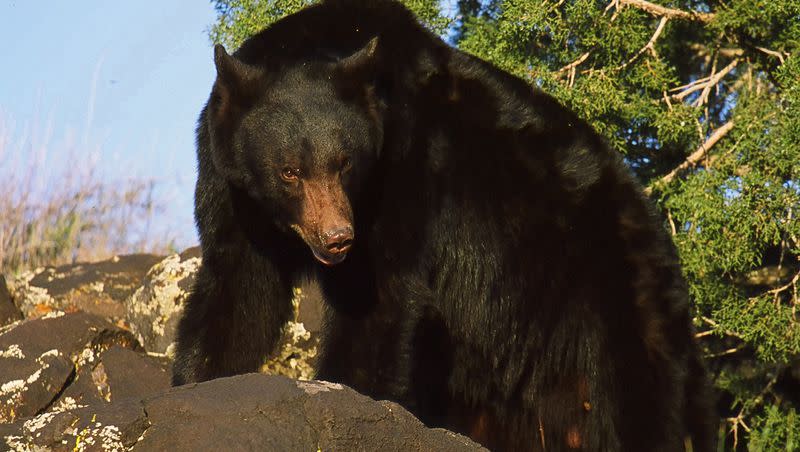Do bears have natural GPS? A mama bear walks 46 miles back to the ski resort from which she was removed

A black bear in Colorado is believed to have walked 46 miles to return to Steamboat Springs this spring after wildlife officers relocated her in September 2022 after she had climbed into an improperly closed dumpster.
The bear, identified as No. 1036, according to the ear tag affixed by wildlife officers, returned to the ski resort community in northwestern Colorado to den and give birth to three cubs.
The sow, believed to be in her late teens, was dropped off near the Colorado-Wyoming border, according to media reports. Thus far there do not appear to be any recent reports of negative human interactions with the sow and her cubs.
Darren DeBloois, game mammals program coordinator for the Utah Division of Wildlife Services, said the bear’s trek was lengthy but not unheard of.
Just last week, Utah Division of Wildlife Resources officers relocated a black bear and no sooner had they dropped her off with a GPS collar, “she just turned around, kind of made a big loop and went right back to where she was caught,” said DeBloois.
“It’s one of the mysteries of wildlife management. We’ve talked about it for years, and I don’t know if anybody’s cracked it. How do they orient themselves in their space, especially when you take them somewhere that where theoretically they haven’t ever been before? How do they figure out exactly where to go to wind up in the same exact place where they were before?” DeBloois said.
According to DeBloois, relocations of older bears are more challenging because they appear to develop “a mental map” of their territory over time. Research by Utah wildlife officials indicates that black bears can be long-lived, some surviving 30-plus years.
“You’d think that capturing them, putting them in a trap, tranquilizing them, collaring them and moving them a long way that they’d get lost, but they don’t sometimes,” he said.
Relocations of younger bears tend to be more successful because “1 or 2 year olds have just gotten kicked off of mom and they’re going to be looking for a new place anyway,” DeBloois said.
According to a Steamboat Pilot report, “the percentage of bears that can be relocated is extremely low at about 2% or less of bears that are involved in reported incidents. The success rate of those relocations is even lower.”
When bears have located a stable and easy to access food source, they often return to those sites, so it is incumbent on humans to carefully manage access to refuse and food, thereby reducing the potential for conflicts between humans and bears, DeBloois said.
While some relocated bears return to the communities from which they were removed, there are times that the experience changes a bear’s behavior for the better, he said.
“Sometimes you move them and that’s enough. Even though they go back, they just don’t get in trouble again. It was just enough of a bad experience that they kind of stay out of trouble, but you just never know,” DeBloois said.
For more tips about bears, visit the Utah Division of Wildlife Resources website.
Related

